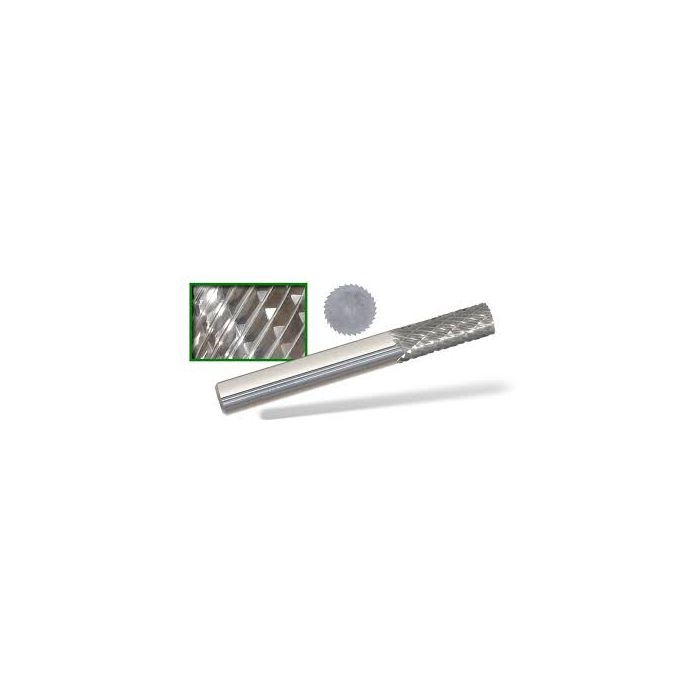Use tungsten carbide burrs on hard materials including steel, aluminum and cast iron, various stone, ceramic, porcelain, wood, acrylics, fibreglass and reinforced plastics. When suited for soft metals for example gold, platinum and silver, carbide burrs are fantastic because they can last for years with no breaking or chipping.

Different cuts of carbide burrs will be ideal for certain materials.
Purposes of SB-3 Carbide Burr Die Grinder Bit
Use carbide burrs in air tools for example die grinders, pneumatic rotary tools and high speed engravers. Micro Motors, Pendant Drills, Flexible Shafts, and hobby rotary tools like a Dremel.
Carbide burrs are traditionally used for metalworking, tool making, engineering, model engineering, wood carving, jewelry making, welding, chamferring, casting, deburring, grinding, cylinder head porting and sculpting. Carbide burrs are employed inside the aerospace, automotive, dentistry, stone and metalsmith industries.
What SB-3 Carbide Burr cut should you?
Single cut (one flute) carbide burrs possess a right handed (up cut) spiral flute. Single cut can be used with stainless, hardened steel, copper, iron and ferrous metals and definately will remove material quickly having a smooth finish. Use for heavy stock removal, milling, deburring and cleaning.
Heavy removing material
Milling
Deburring
Cleaning
Creates long chips
Use double cut carbide burrs on ferrous and non ferrous metals, aluminium, soft steel and for all non-metal materials for example stone, plastics, real wood and ceramic. This cut has more cutting edges and will remove material faster. Double cut also called Diamond Cut or Cross Cut (2 flutes cut across the other) and can leave a smoother finish than single cut on account of producing smaller chips as they cut away the fabric. Use double cut for medium-light stock removal, deburring, finishing and cleaning. Double cut carbide burrs are hottest and benefit most applications.
Medium- light removing material
Deburring
Fine finishing
Cleaning
Smooth finish
Creates small chips
What SB-3 Carbide Burr RPM speed the use of?
The rate from which you employ your carbide burr with your rotary tool depends on the material you’re utilizing it on and also the contour being produced but it’s safe to say you don’t more than 35,000 RPM. If your burs are chipping easily this could be because of the speed being too slow. It’s ideal to begin the bur off slow, improving the speed as you go along. High speeds prevents clogging inside the flutes of your respective carbide burs.
As with all drill bits and burrs, permit the burr perform work and apply merely a little pressure, otherwise the cutting edges in the flutes will chip away or become smooth prematurely, reducing the lifetime of your burr.
For details about SB-3 Carbide Burrs see the best web portal






